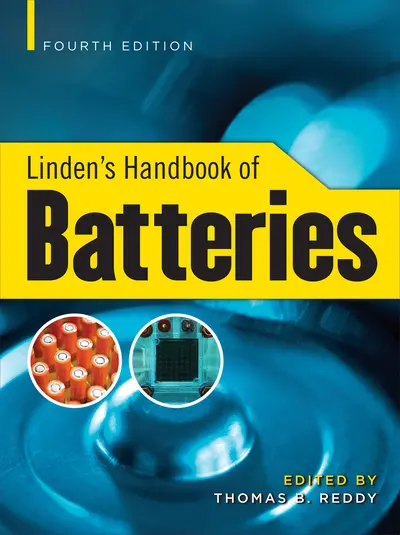My Account Details

ISBN10: 0071624198 | ISBN13: 9780071624190

Step 1 . Download Adobe Digital Editions to your PC or Mac desktop/laptop.
Step 2. Register and authorize your Adobe ID (optional). To access your eBook on multiple devices, first create an Adobe ID at account.adobe.com. Then, open Adobe Digital Editions, go to the Help menu, and select "Authorize Computer" to link your Adobe ID.
Step 3. Open Your eBook. Use Adobe Digital Editions to open the file. If the eBook doesn’t open, contact customer service for assistance.
The most complete and up-to-date guide to battery technology and selection Thoroughly revised throughout, Linden's Handbook of Batteries, Fourth Editions provides authoritative coverage of the characteristics, properties, and performance of every major battery type. New information on emerging battery systems and their applications is included in this definitive volume. International experts offer unparalleled technical guidance on using leading-edge technologies, materials, and methods in new designs and products, and selecting the most suitable battery for a particular application. All of the in-depth data you need is contained in this comprehensive resource. The book will be useful to graduate students, battery researchers, applications engineers, and all others interested in the state-of-the-art in battery technology. Linden's Handbook of Batteries, Fourth Edition covers: PRINCIPLES OF OPERATION PRIMARY AND SECONDARY BATTERIES SPECIALIZED BATTERY SYSTEMS FUEL CELLS AND ELECTROCHEMICAL CAPACITORS Includes new chapters on: Battery modeling Battery electrolytes Lithium-ion batteries Battery selection for consumer electronics Batteries for electric, hybrid, and plug-in hybrid vehicles Batteries for electrical energy storage systems Batteries for biomedical applications Button cell batteries Batteries for military and space applications, including reserve water-activated and reserve military batteries Electrochemical capacitors
Need support? We're here to help - Get real-world support and resources every step of the way.